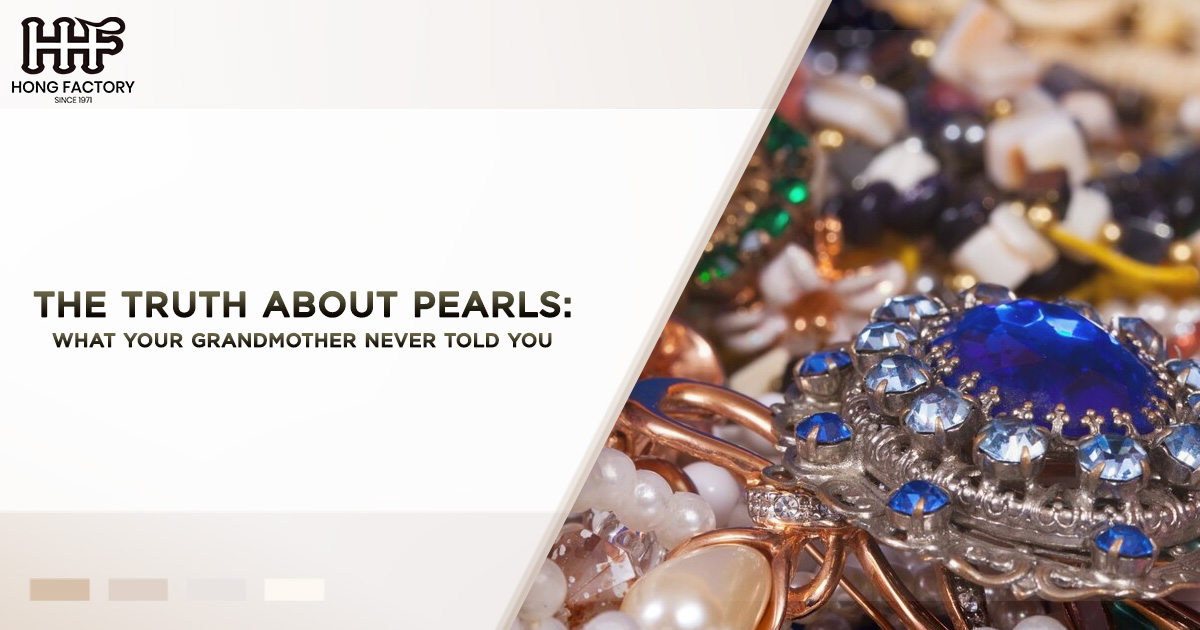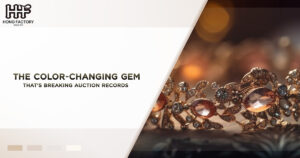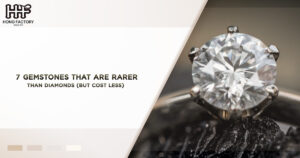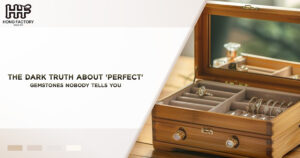Pearls have long been symbols of elegance and timeless beauty. Whether strung into a classic necklace or set in a modern ring, these lustrous gems have enchanted people for centuries. Yet, behind their iridescent glow lies a world of fascinating truths, surprising misconceptions, and intricate processes that many may not fully understand. From their natural origins to the intricacies of pearl farming, grading systems, and proper care, pearls hold secrets that even your grandmother might not have known. In this article, we’ll uncover the truth about pearls to help you appreciate their true value and allure.
Natural Pearls – Nature’s Rare Gift
When most people think of pearls, they imagine small, round, gleaming gems that were plucked straight from the ocean. However, natural pearls—those formed without human intervention—are incredibly rare. In fact, fewer than one in 10,000 wild oysters or mollusks will ever produce a natural pearl, and of those, only a fraction will meet the standards of quality and beauty for jewelry.
Natural pearls form when an irritant, such as a grain of sand or a parasite, accidentally enters a mollusk’s shell. In response, the mollusk secretes layers of nacre (pronounced NAY-ker), a combination of aragonite crystals and conchiolin proteins, to coat the irritant. Over time, these layers build up to create the lustrous gem we know as a pearl.
Historically, natural pearls were so rare and valuable that they were considered treasures reserved for royalty and the ultra-wealthy. The Arabian Gulf, the Indian Ocean, and the South China Sea were once major sources of natural pearls, but overfishing and environmental changes have made these gems even scarcer today. Most pearls on the market now come from cultured sources, but natural pearls remain prized for their rarity and organic beauty.
The Misconception About “Perfect” Natural Pearls
One common misconception is that natural pearls are always perfectly round and flawless. In reality, natural pearls come in a variety of shapes—round, oval, teardrop, and baroque (irregular or abstract shapes). Their imperfections and unique shapes are part of their charm and authenticity, emphasizing their organic origins.
Pearl Farming – Nature Meets Science
The scarcity of natural pearls led to the development of pearl farming, also known as pearl cultivation, in the early 20th century. This revolutionary method was pioneered by Japanese entrepreneur Kokichi Mikimoto, who discovered how to create cultured pearls by introducing a nucleus (usually a bead or piece of mantle tissue) into a mollusk. The mollusk then coats the nucleus with layers of nacre, just as it would with a natural pearl.
Today, pearl farms exist across the globe, producing several types of cultured pearls, including
- Akoya Pearls: Known for their classic round shape and brilliant luster, these pearls are primarily farmed in Japan and China.
- South Sea Pearls: Cultivated in the waters of Australia, Indonesia, and the Philippines, these pearls are the largest and among the most valuable.
- Tahitian Pearls: Often referred to as black pearls, they come in stunning shades of green, blue, purple, and grey, cultivated around French Polynesia.
- Freshwater Pearls: Produced in rivers and lakes, primarily in China, freshwater pearls are more affordable and come in a wide variety of shapes and colors.
Pearl farming is both an art and a science, requiring precision and patience. It can take anywhere from six months to several years for a pearl to form, depending on its desired size and type. While cultured pearls are more accessible than natural ones, their quality still depends on factors like farming techniques, water conditions, and the mollusk’s health.
Pearl Grading – The Anatomy of Value
When it comes to determining the value of a pearl, pearl grading is key. Just like diamonds, pearls are evaluated based on specific criteria that affect their quality and price. These factors include
- Luster : This is the most important factor. A pearl’s luster refers to its surface brilliance and how well it reflects light. High-quality pearls have a sharp, mirror-like luster, while lower-quality pearls may appear dull or chalky.
- Surface Quality : Pearls with fewer blemishes, such as spots, pits, or cracks, are considered more valuable. However, minor imperfections are common and can add character to the gem.
- Shape : While perfectly round pearls are the most sought-after, other shapes like oval, button, and baroque can also be highly desirable, especially in artistic or bespoke jewelry designs.
- Color : Pearls come in a spectrum of natural colors, from white and cream to gold, pink, and black. The most valuable colors often depend on personal preference and market demand.
- Size : Larger pearls are generally more valuable, but size alone doesn’t determine worth. A small pearl with exceptional luster and flawless surface quality can be more valuable than a large, dull pearl.
- Matching : For pearl strands or earrings, the consistency in size, color, and shape can significantly influence the overall value.
Understanding pearl grading can help you make informed decisions when purchasing pearls, whether you’re looking for a timeless heirloom or a trendy statement piece.
Pearl Care – Keeping the Glow Alive
Pearls are not as hard or durable as gemstones like diamonds or sapphires, which makes them more susceptible to damage. Proper pearl care is essential to preserving their beauty and longevity. Here are some tips to keep your pearls looking radiant
1. Wear Them Often
Believe it or not, pearls benefit from being worn. The natural oils in your skin help maintain their luster. However, avoid applying lotions, perfumes, or hairspray when wearing pearls, as these substances can damage their delicate surface.
2. Avoid Harsh Chemicals
Pearls are sensitive to acids, alcohol, and other harsh chemicals. Always remove them before swimming in chlorinated water, cleaning with household products, or using beauty products.
3. Clean Them Gently
After wearing, wipe your pearls with a soft, damp cloth to remove any dirt or residue. For a deeper clean, use a mild soap solution and avoid soaking them for extended periods.
4. Store Them Properly
Pearls should be stored separately from other jewelry to prevent scratches. Keep them in a soft pouch or lined jewelry box, and avoid storing them in plastic, as it can trap moisture and damage the nacre.
5. Restring Regularly
If you own a pearl necklace or bracelet, have it restrung every few years to prevent the thread from weakening or breaking. Use silk thread with knots between each pearl to prevent rubbing and loss in case the string breaks.
Debunking Myths About Pearls
Despite their popularity, pearls are often surrounded by myths and misconceptions. Let’s debunk some of the most common ones
Myth 1 : Pearls are indestructible.
- Reality: Pearls are delicate and can be scratched, chipped, or worn down if not cared for properly.
Myth 2 : Only white pearls are valuable.
- Reality: Pearls come in a range of colors, and some, like golden South Sea pearls or black Tahitian pearls, can be even more valuable than white ones.
Myth 3 : All pearls are natural.
- Reality: The vast majority of pearls on the market today are cultured, though they are no less beautiful or authentic.
Myth 4: Pearls are only for formal occasions.
- Reality: Modern jewelry designs have made pearls versatile, suitable for casual, office, and formal wear alike.
Conclusion
Pearls hold a unique place in the world of jewelry, combining the beauty of nature with the ingenuity of human craftsmanship. From the rarity of natural pearls to the refined process of pearl farming, the nuances of pearl grading, and the importance of proper care, there is much more to these gems than meets the eye. Whether you’re admiring a family heirloom or shopping for a new piece, understanding the truth about pearls will deepen your appreciation for their history, artistry, and timeless appeal. After all, pearls are more than just accessories—they’re treasures with stories to tell.




